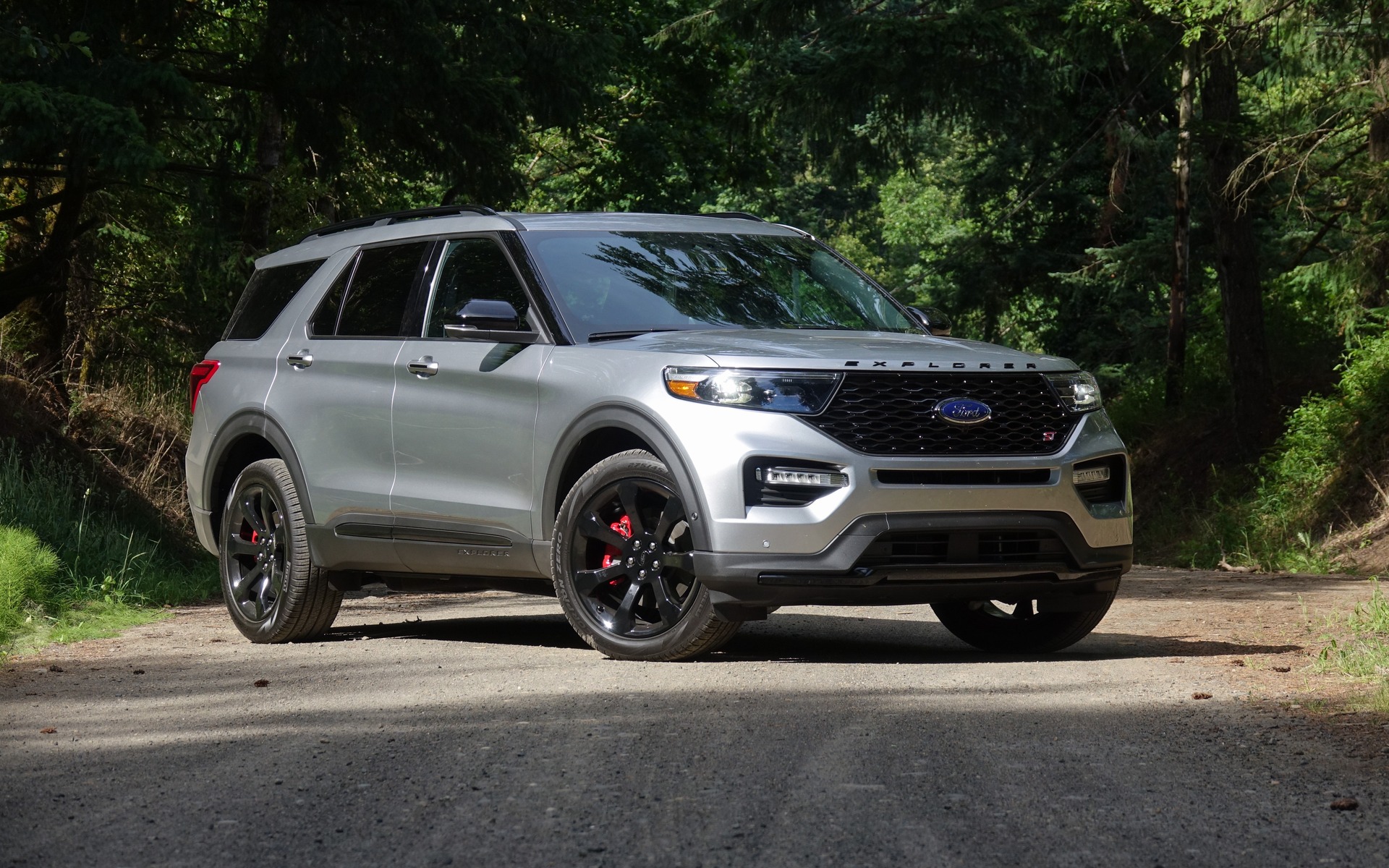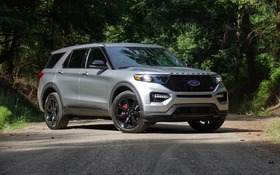2020 Ford Explorer: Five-pronged Attack

| Strong points |
|
|---|---|
| Weak points |
|
STEVENSON, Washington—The Explorer is the most successful vehicle launched by America’s oldest manufacturer in the last 30 years. Sure, the Ford GT is spectacular and the Mustang deserves a lot of praise, but these two sports cars have not changed the daily lives of hundreds of millions of people in North America. On the other hand, over 10 million Explorers have been sold since the model’s debut in 1990.
While some automakers choose to release the most powerful or most luxurious version of their new models first, it’s the complete opposite with the 2020 Ford Explorer. The five different flavours will all be available at launch including the XLT, Limited, Hybrid Limited, Platinum and ST.
- Also: The 2020 Ford Explorer Shows its New Face at the Montreal Auto Show
- Also: 2019 Ford Edge: Well-deserved Popularity
The Explorer Hybrid Limited and Explorer ST stand out with unique powertrains, the former effectively marking a first in the history of the popular midsize SUV, while the latter features a potent twin-turbo V6, firmer suspension, bigger brakes, wider tires and sportier styling (black trim accents and quad exhaust tips).

Solid Foundation
The 2020 Ford Explorer rides on an all-new architecture designed for rear-wheel drive or all-wheel drive vehicles—so new in fact that it doesn’t even have a codename yet. The engine is mounted longitudinally and the body structure combines a good amount of high-strength steel with aluminum. In a wise move, Ford decided to make AWD standard in Canada and leave the RWD models to the U.S.
The interior of the Explorer is totally new, as well. Taking centre stage is the available 10.1-inch touchscreen laid vertically atop the dashboard—one of the biggest on the market. This sleek interface has all the menus and icons of SYNC 3, which is a mighty fine infotainment system.

The standard display is another tablet-style unit measuring eight inches and positioned horizontally. The analog gauges behind the steering wheel are nice, too, but similar to a vast number of vehicles, they can be replaced by a fully digital 12.3-inch instrument panel.
A plethora of systems and amenities make the 2020 Ford Explorer safer, more comfortable and more enjoyable overall. Kudos for the front buckets, which were designed by an ergonomics specialist affectionately called “Dr. Derriere” by his peers. The three-section, power-adjustable lumbar support is certainly a blessing.
Offering seating for six or seven, all 2020 Explorers provide reasonable access to the third row, though the latter is best left for kids and pets. The available second-row captain’s chairs are decent, but the gap between them is narrow and filled by a floor-mounted plastic bin.

Complete Players
Mechanically, both the XLT and Limited models get a turbocharged 2.3-litre four-cylinder engine delivering 300 horsepower and 310 pound-feet of torque. Their maximum towing capacity of 5,300 pounds is way better than the previous Explorer’s 3,000 pounds.
The Platinum houses a twin-turbo 3.0-litre V6 rated at 365 horsepower and 380 pound-feet of torque. It can tow up to 5,600 pounds, a 12-percent improvement from last year. Another twin-turbo V6 is found in the athletic Explorer ST, which produces 400 horsepower and 415 pound-feet of torque.
As for the new Ford Explorer Hybrid Limited, it combines a naturally aspirated 3.3-litre V6 with an electric motor and a 10-speed “modular” transmission. Total system output is 318 horsepower along with 322 pound-feet of torque, good enough to tow 5,000 pounds. During the media event, this particular model easily pulled a trailer with a powerboat on it (combined weight of 4,500 pounds). Incidentally, the compact, liquid-cooled lithium-ion battery is mounted under the second-row seats, thus interior room is not affected. The Explorer Hybrid has a total range of more than 800 kilometres, Ford claims.
Of course, the Explorer ST is the most badass of the group, especially with black-painted 21-inch wheels and red brake callipers from the optional Street Pack (available after launch). It’s also extremely solid in corners thanks to 275/45R/21-spec tires, sportier suspension tuning and sharp steering. Acceleration is strong, though the electronically amplified engine sound felt unpleasant to these ears.

The other Explorers are more conservatively styled—maybe a bit too much—with their aluminum or chrome grille. But who cares? They all prove stable and confidence-inspiring with their rigid chassis, robust cast-aluminum suspension links and seriously refined ways.
The real surprise comes from the 2.3-litre turbo, a lively and muscular engine that reduces weight over the front axle by 352-626 pounds, depending on the model. It makes the Explorer more agile, as we found out while comparing a four-cylinder XLT with the heavy Hybrid Limited during an off-road test. The latter still did a great job, but the superior handling of the former, which is more than 600 pounds lighter, was evident. Driving dynamics in all conditions are improved, too.
Without a doubt, the Explorer XLT and Limited offer the best combination of performance and value, but Ford must be commended for masterfully orchestrating a five-pronged attack on the immensely popular midsize SUV segment. We just hope that the new Explorer models will be as reliable as they are competent and attractive.











